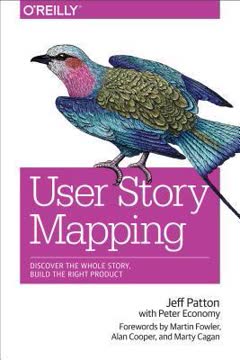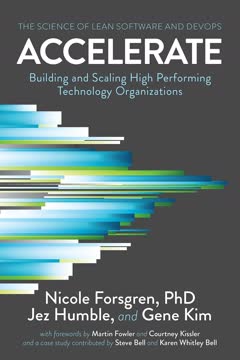Key Takeaways
1. The Initiation Sprint: A Lean Approach to Project Kickoff
"The Initiation Sprint contains activities and exercises that are designed to address the three initiation dimensions mentioned above (Product, Process, and People)."
Efficient project initiation. The Initiation Sprint is a three-week period of intensive collaboration designed to kickstart Agile projects. It focuses on three core dimensions:
- Product: Defining the customer problem, business goals, and solution vision
- Process: Establishing how the team will work together and deliver value
- People: Understanding team dynamics, strengths, and working styles
This approach balances the need for preparation with Agile principles, avoiding lengthy planning phases while ensuring alignment on project direction. The Sprint includes activities such as defining success criteria, mapping current and future states, and developing initial product backlogs.
2. Setting the Stage: Assessing Project Context and Preparing for Success
"No two organizations are the same, and the history, people dynamics, complexity and many other nuances of a team and organization should play a big role in determining how you initiate the project."
Context is crucial. Before diving into the Initiation Sprint, it's essential to understand the project's context:
- People: Identify key stakeholders, their roles, motivations, and past project experiences
- Current state: Analyze existing customer research, process maps, and technical assessments
- Future vision: Review any previous discovery or visioning work
- Organizational background: Assess Agile maturity, culture, and past project lessons
This assessment helps tailor the Initiation Sprint to the specific needs of the organization and project. It ensures that existing work is leveraged and that potential challenges are identified early.
3. Analyzing the Current State: Customer Journey, Business Process, and Architecture
"To better understand how your customers interact with your existing product, and to envision how to improve their experience, work with your team to collaboratively develop current-state (as-is) customer journeys."
Understand the baseline. Analyzing the current state involves three key components:
- Customer journey mapping: Visualize how customers currently interact with the product
- End-to-end business process mapping: Document internal processes for delivering value
- Current architecture analysis: Understand existing system components and interactions
These activities help identify pain points, inefficiencies, and opportunities for improvement. They provide a shared understanding of the starting point for the project and inform the design of future solutions.
4. Envisioning the Future: Designing the Minimum Marketable Product (MMP)
"The Minimum Marketable Product (MMP) is the smallest piece of functionality that can be delivered that has value to the customer and the business and provides us with valuable feedback about whether we're building the right functionality and also whether we are building it right."
Focus on minimal viability. The MMP represents the first increment of the product to be released:
- Smallest set of features that deliver value to customers and the business
- Designed to gather early feedback and validate assumptions
- Balances the need for speed with delivering a marketable product
To design the MMP:
- Use the 7 Product Dimensions model to identify high-value options
- Create wireframes or prototypes for user testing and feedback
- Iterate based on user input to refine the MMP design
5. Breaking Down the Vision: From Epics to User Stories
"Epics are work blocks with objectives and measurable results, addressing pain points or gaps. The narrative/text of an Epic is short, simple, and describes—in the customer's own language—something that the customer wants or needs."
Decompose for delivery. Breaking down the product vision into manageable pieces involves:
- Identifying Epics: Large, high-level pieces of functionality
- Decomposing Epics into user stories: Smaller, implementable features
- Estimating and prioritizing: Assess effort and business value for each story
This process helps translate the conceptual vision into concrete, actionable work items. It enables the team to start planning their development efforts and provides a basis for release planning.
6. Planning for Success: Release Planning and Risk Management
"Mapping high-level user stories to Sprints or months, after roughly calculating the team's expected capacity (the amount of work the team is expected to be able to take in within a specific timeframe) and the user-story effort estimates calculated earlier, could provide a rough answer to the question of whether the MMP plan is realistic."
Strategic planning. Release planning involves:
- Mapping user stories to Sprints or months
- Estimating team capacity and story effort
- Balancing MMP scope with realistic timelines
Risk management is equally crucial:
- Identify potential risks across customer, business, technology, and team dimensions
- Assess likelihood and impact of risks
- Develop mitigation strategies for high-priority risks
These activities help set realistic expectations and prepare the team for potential challenges.
7. Fostering Collaboration: Developing Team Working Agreements and Ways of Working
"Filling in the Team Working Agreement Canvas together is a great exercise to help forge a team identity."
Build team cohesion. Establishing clear working agreements and ways of working is crucial for team success:
- Develop a team identity: Choose a team name and motto
- Define team mission and values
- Identify individual and collective strengths and growth opportunities
- Establish norms for communication, decision-making, and conflict resolution
- Agree on Agile practices and ceremonies to follow
These agreements help create a shared understanding of how the team will work together, fostering collaboration and setting the foundation for a high-performing Agile team.
Last updated:
FAQ
What's "The Agile Initiation Playbook" about?
- Comprehensive guide: "The Agile Initiation Playbook" by Ayman Idris is a detailed guide for launching large Agile projects, focusing on the Initiation Sprint phase.
- Practical approach: It provides a step-by-step roadmap for setting the stage for Agile project initiation, emphasizing collaboration and stakeholder alignment.
- Real-world application: The book follows a real Initiation Sprint facilitated for a large bank, detailing activities and exercises to explore project themes and questions.
- Hands-on resource: It aims to equip readers with the confidence to facilitate an Initiation Sprint end-to-end, even without prior experience in large-scale facilitation.
Why should I read "The Agile Initiation Playbook"?
- Practical insights: The book offers practical, hands-on guidance for initiating Agile projects, making it valuable for facilitators, sponsors, and participants.
- Real-world examples: It includes a case study of a large bank's Initiation Sprint, providing real-world context and application of Agile principles.
- Comprehensive coverage: The book covers all aspects of the Initiation Sprint, from setting the stage to closing the Sprint and preparing for development.
- Facilitation support: It provides facilitation guides for each activity, helping readers apply the concepts in their own projects.
What are the key takeaways of "The Agile Initiation Playbook"?
- Importance of alignment: The book emphasizes the need for broad alignment among stakeholders on the project's initial direction.
- Structured initiation: It introduces the concept of the Initiation Sprint, a three-week period of intensive collaboration to explore key project themes.
- Focus on exploration: Initiation is about exploring and building a shared understanding, not finding final answers to all questions.
- Practical tools: The book provides tools and techniques for facilitating various activities, from mapping customer journeys to developing a testing strategy.
What is the Initiation Sprint in "The Agile Initiation Playbook"?
- Definition: The Initiation Sprint is a three-week period of intensive collaboration to explore key project themes and questions.
- Purpose: It aims to create broad alignment among stakeholders and build a shared understanding of the project's initial direction.
- Activities: The Sprint includes activities like mapping customer journeys, envisioning future states, and developing a testing strategy.
- Outcome: By the end of the Sprint, the team should have a plan for starting development and a collective recognition of project challenges.
How does "The Agile Initiation Playbook" define success for an Agile project?
- Shared understanding: Success involves building a shared understanding of the project's goals, challenges, and stakeholder expectations.
- Alignment: Achieving broad alignment among stakeholders on the project's initial direction is crucial.
- Iterative approach: Success is not about finding final answers but about exploring and iterating on ideas and assumptions.
- Quality and collaboration: A successful project is one where the team collaborates effectively and builds a high-quality product.
What are the key components of the Initiation Sprint in "The Agile Initiation Playbook"?
- Product dimension: Understanding the customer problem, business goals, and desired outcomes is essential.
- Process dimension: Defining how the team will work together, including meetings, roles, and tools, is crucial.
- People dimension: Identifying the people involved, their aspirations, and working styles helps build a cohesive team.
- Flow and deliverables: The Sprint includes activities like mapping current and future states, developing strategies, and building a social contract.
How does "The Agile Initiation Playbook" suggest handling risks in Agile projects?
- Risk identification: The book emphasizes the importance of identifying potential risks early in the project.
- Risk assessment: It suggests assessing risks based on their likelihood and impact to prioritize them effectively.
- Mitigation strategies: Developing strategies to address risks, such as mitigation, avoidance, or containment, is crucial.
- Regular review: The book recommends revisiting risks regularly to ensure they are managed effectively throughout the project.
What is the role of stakeholders in "The Agile Initiation Playbook"?
- Engagement: The book highlights the importance of engaging stakeholders early and often to gather feedback and ensure alignment.
- Communication: It suggests developing a communication plan to keep stakeholders informed and involved throughout the project.
- Influence: Understanding stakeholders' influence and interest helps prioritize their engagement and address their concerns.
- Collaboration: The book emphasizes the need for collaboration with stakeholders to build a high-quality product that meets their needs.
How does "The Agile Initiation Playbook" address team collaboration?
- Social contract: The book suggests developing a social contract to establish ground rules for collaboration and communication.
- Working agreements: It emphasizes the importance of agreeing on how the team will work together, including decision-making and conflict resolution.
- Continuous improvement: The book encourages regular retrospectives to reflect on team dynamics and identify areas for improvement.
- Diverse perspectives: It highlights the value of diverse perspectives and encourages team members to share their ideas and assumptions.
What are the best quotes from "The Agile Initiation Playbook" and what do they mean?
- "Initiation is a process of exploration": This quote emphasizes that the goal of initiation is to explore and build a shared understanding, not to find final answers.
- "Success is about alignment": This highlights the importance of achieving broad alignment among stakeholders on the project's initial direction.
- "Agile is about collaboration": This underscores the value of collaboration and communication in building a high-quality product.
- "Iterate and learn": This quote reflects the Agile principle of iterating on ideas and learning from feedback to improve the product.
How does "The Agile Initiation Playbook" suggest mapping customer journeys?
- Current-state mapping: The book suggests mapping the current customer journey to identify pain points and areas for improvement.
- Future-state envisioning: It encourages envisioning a transformed customer journey that addresses existing pain points and enhances the user experience.
- Collaborative effort: Mapping customer journeys is a collaborative activity that involves input from various stakeholders and team members.
- Iterative process: The book emphasizes that customer-journey mapping is an iterative process that evolves as the team learns more about the customer and the product.
What is the Minimum Marketable Product (MMP) in "The Agile Initiation Playbook"?
- Definition: The MMP is the smallest piece of functionality that can be delivered to customers and provides valuable feedback.
- Value delivery: It should deliver value to both the customer and the business, allowing the team to learn and iterate.
- Scope: The MMP includes all necessary features, training, documentation, and support for value realization.
- Iterative approach: The book emphasizes releasing the MMP early to gather feedback and improve the product incrementally.
Review Summary
Essential Scrum: A Practical Guide to the Most Popular Agile Process receives high praise from readers for its comprehensive coverage of Scrum principles and practices. Reviewers appreciate the clear explanations, practical examples, and helpful visuals. Many find it useful for both beginners and experienced practitioners, citing its value as a reference guide. The book is commended for its balanced approach, addressing various stakeholder perspectives. Some readers note its length and detail, suggesting it could be more concise. Overall, it's highly recommended for those seeking to understand and implement Scrum effectively.
Similar Books










Download PDF
Download EPUB
.epub digital book format is ideal for reading ebooks on phones, tablets, and e-readers.




